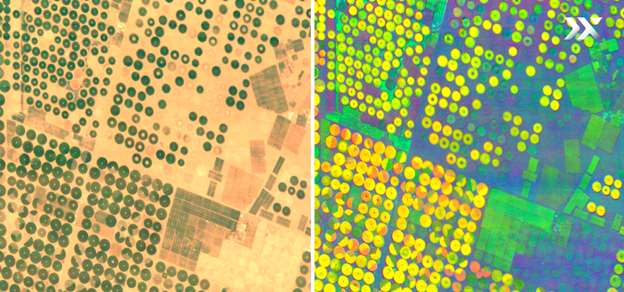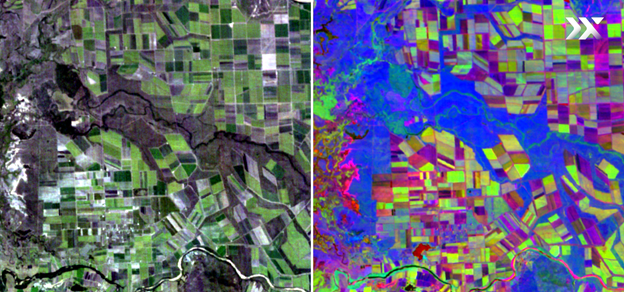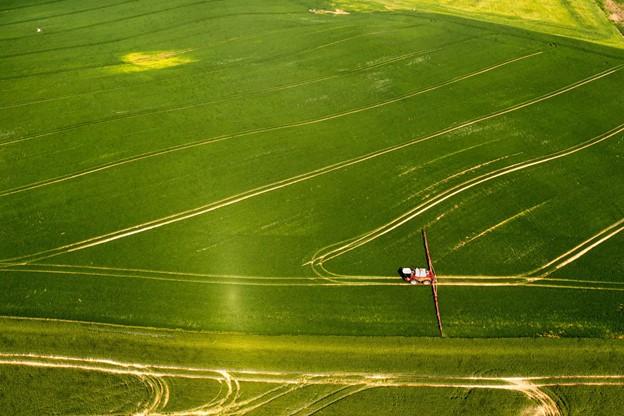The global population is projected to reach almost 10 billion by 2050, necessitating a 98% increase in food production. However, extreme and unpredictable weather events driven by climate change, which threaten agricultural productivity, further complicate this challenge, making technological advancements in agriculture essential.
What is Precision Agriculture?
Precision agriculture, also known as smart farming, integrates technology and data to improve agricultural efficiency and productivity. The goal is to maximise yields and minimise waste and inputs while improving overall efficiency. Precision agriculture includes tools like satellite-guided tractors, autonomous robots, drones, field sensors, and specialised smartphone apps.
The U.S. Government Accountability Office (GAO) highlights that precision agriculture technologies benefit farmers, society, and the environment by optimising resource use and improving productivity. A 2021 study found that farmers using these technologies saw a 4% increase in crop production, a 7% improvement in fertiliser efficiency, a 9% reduction in pesticide use, a 6% reduction in fossil fuel use, and a 4% reduction in water use.
The Role of Hyperspectral Imaging in Agriculture
Traditional satellite imaging, like multispectral imaging (MSI), has been a valuable tool in agriculture since the launch of the first Landsat satellite in 1972. While valuable, MSI is limited in its spectral resolution, hindering its ability to detect subtle changes in crop health and biochemical parameters. Hyperspectral imaging overcomes this limitation by capturing data across a continuous spectrum across hundreds of bands, each representing unique spectral signatures for detailed analysis of plant health, soil conditions, and nutrient content.

The high spectral resolution of Pixxel hyperspectral imaging satellites (right) allows for the extraction of precise spectral signatures of croplands, thus allowing for the distinction between different varieties of the same crop (Tubarjal, Saudi Arabia).
Advantages of Hyperspectral Imaging Excels Over Multispectral Imaging
Unlike MSI, which captures data in discrete bands, hyperspectral sensors record a continuous spectrum across the visible and near-infrared ranges, enabling a more comprehensive view of crop conditions. Each pixel in a hyperspectral image corresponds to a unique spectral signature, enabling the precise identification of vegetation types and assessment of biophysical and biochemical properties, like chlorophyll content, nitrogen levels, and leaf area index.
Recent advancements in sensor technology have led to the development of commercial hyperspectral imaging, with companies like Pixxel providing high-resolution imagery that captures fine variations over an area. This ability to monitor crop health at a species level enables targeted interventions, resulting in increased efficiency and sustainability.
Benefits of Hyperspectral Technology in Precision Agriculture

1.Enhanced Precision: Hyperspectral imaging provides high-resolution imagery to pinpoint variations within a single field. These granular details allow farmers to identify specific areas requiring attention, such as nutrient deficiencies or early signs of disease, enabling targeted interventions and minimising overall resource use.
2.Efficient Data Collection: Hyperspectral sensors gather comprehensive data on soil moisture, crop stress indicators, and more, streamlining decision-making. This efficiency reduces the need for extensive manual sampling, enabling quicker and more accurate field assessments.
3.Terrain Accessibility: Satellite-based hyperspectral sensors are not limited by challenging terrains. Whether monitoring rolling hills or flat plains, hyperspectral sensors can collect consistent and reliable data across diverse landscapes, making it suitable for various geographic conditions.
4.Near Real-Time Monitoring: One of the standout features of satellite-based hyperspectral imagery is its ability to offer near real-time updates on crop health. Farmers can receive frequent updates on field conditions, allowing for timely interventions before issues become critical. This capability ensures optimal crop growth and reduces the risk of loss.
5.Early Disease and Pest Detection: Hyperspectral imagery's high spectral resolution enables early detection of diseases, pests, and invasive species, allowing for prompt management actions. This reduces the need for broad-spectrum pesticides, lowering costs and environmental impact.
6.Sustainable Resource Use: Hyperspectral imaging provides precise data on nutrient levels and soil health, helping farmers optimise fertilisation and irrigation, minimise waste, and promote sustainable practices.

The hyperspectral image (right) highlights the superior level of detail, enabling the analysis of parameters such as leaf chlorophyll content, biomass, and growth stages (Burdekin Shire, Australia). Source: Pixxel
The Way Forward
Hyperspectral imaging has the potential to revolutionise precision agriculture by providing detailed, near real-time insights that optimise crop management. However, widespread adoption has been limited by high costs, large data volumes, and restricted availability of imagery. Despite these hurdles, recent advancements in sensor technology and the increasing involvement of commercial space ventures are mitigating these challenges.
The future of hyperspectral imaging in agriculture is expected to tackle the remaining barriers of cost and data availability. As sensor miniaturisation advances, hyperspectral imaging will be pivotal for global agricultural management. Its ability to provide near real-time monitoring, detect diseases early, and optimise resources provides a competitive advantage over conventional remote sensing technologies.
Companies like Pixxel are leading this transformation with their cutting-edge hyperspectral imaging satellites. By capturing data at unprecedented resolutions, Pixxel empowers agricultural organisations to implement precision strategies that enhance productivity and sustainability. With high-quality imagery, frequent revisit times, and customised solutions, Pixxel is helping the agricultural sector unlock the full potential of Earth observation technology.
Contact their sales team for an in-depth understanding of how hyperspectral satellites can benefit your organisation.
FAQs
1.What is precision agriculture?
Precision agriculture uses technology and data analysis to optimise production, reduce waste, and improve efficiency.
2.How does hyperspectral imaging benefit precision agriculture?
Hyperspectral imaging provides detailed insights into crop health, soil composition, and nutrient levels, enabling early detection of vegetation stress.
3.Why is satellite imagery important in agriculture?
Satellite imagery helps farmers monitor large areas, identify patterns, and make informed irrigation, fertilisation, and pest control decisions.
4.What are the advantages of near real-time monitoring in agriculture?
Near real-time monitoring enables quick responses to changing crop conditions, preventing losses and maximising yields.
5.How can precision agriculture technologies help address environmental concerns?
Precision agriculture reduces the use of resources like water, fertiliser, and pesticides, minimising environmental impact and promoting sustainability.



